Thoughts about Bike-sharing
May 23, 2017 | 7 min read
As I was coming out of an exam a couple of days ago, I saw something I’ve seen a couple times before.
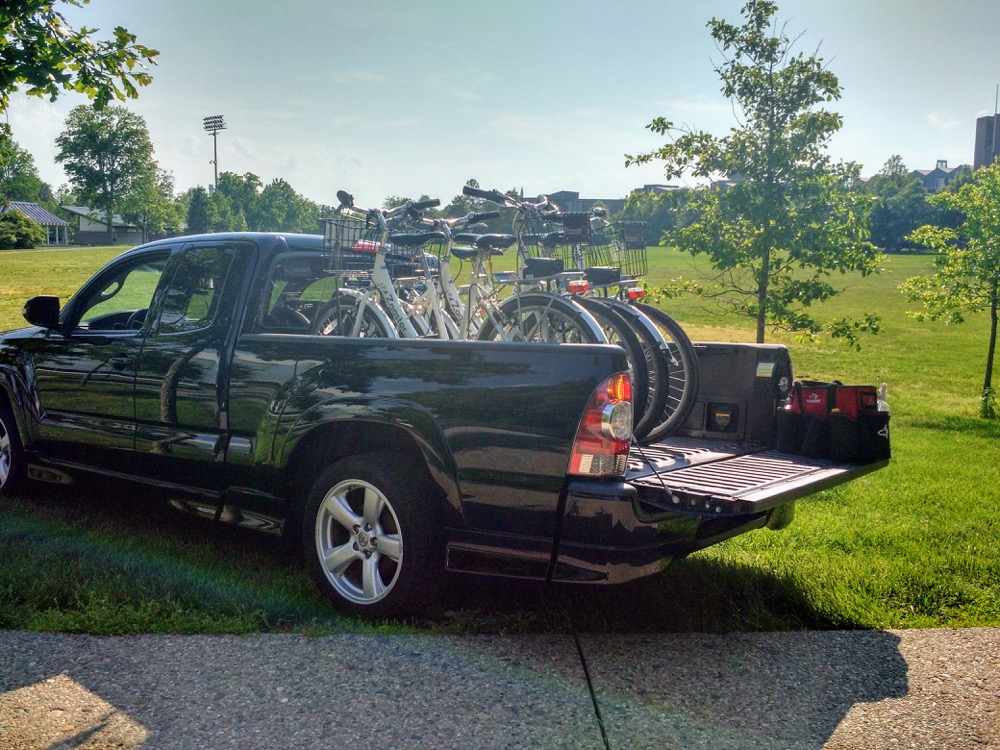 The truck that redistributes bike-sharing bicycles.
The truck that redistributes bike-sharing bicycles.
I’ve seen this bicycle redistribution truck around campus a few times since Princeton started its partnership in 2016 with Zagster to launch bike-sharing on campus. The program has 10 or so bike docking locations on campus that support a fleet of 50 bikes.
It’s just a little bit odd and funny that managing the bike-sharing program (a program that is meant to promote less driving around campus and more biking) requires loading bicycles into the back of a truck and redistributing the bikes to different stations. And according to the minutes from the March 27, 2016, meeting of Princeton’s student government, this truck goes around campus twice (twice!) a week to redistribute bikes.
Then, I was interested in doing a little more research into the effectiveness of the bike-sharing. While I’m not a user of the service, if I was, I would have one requirement: can I find a bike every time that I need one. That is, can I be confident that when I go to a particular station to get a bike that there will be one there.
For different users of the service, I think the minimum success rate is quite different. For a tourist visiting Princeton’s campus, if you want to rent a bike, but there are no available bikes to rent, then no big deal. You can walk around campus instead.
But if you’re a student who relies on the service to get to lectures and classes, then if there’s no bike available that is actually a huge issue. Presumably, the whole point of using the bike-sharing service is so that you can allot less travel time. So if you try to rent a bike 5 minutes before lecture but don’t find one, then you will be late for lecture. If this happens a couple times, then you’ll probably just lose trust in the service, and get yourself a personal bike.
And that’s my qualm about the service: if one of its goals is to reduce the need to have a personal bike on campus for students, then I’m not sure if it can do that job. Similar to ride-hailing services, a bike-sharing service needs a large amount of inventory and liquidity to be thought of as a viable option. Though the more I think about bike-sharing, the more I am convinced that it is not for replacing a bicycle for a daily user.
All of that being said, here’s an interesting exercise: what is the success rate required for someone to depend on a bike-sharing service instead of a personal bike. I think the answer to this question is almost identical to how one might answer the same question about using Uber vs. using a personal vehicle. For me, I wouldn’t be surprised if a 99% success rate is the threshold to clear. That would mean that only 1 out of every 100 times you went to pick up a bike you couldn’t get one. At this level of reliability, you begin to approach the reliability of using a personal bicycle (I reckon that 99% reliability for a personal bike is a fair estimate).
But to get to 99% reliability, I wouldn’t be surprised if the Princeton bike-sharing program would need two or three times as many bikes as it does today. Unlike Uber, which can use surge pricing as an on-demand adjustment to bring more drivers onto its network during busy times, bicycles cannot be “dynamically” added into the network as demand changes. Of the docking locations I see around campus, it’s not uncommon for them to have no bikes at particularly busy parts of the day.
Another factor that is likely preventing a large influx of more bikes: the cost. According to an exploratory report on bike-sharing by the Los Angeles County Metro, the per bike installation cost for bike-sharing is $3000 to $5000! According to the press release, Princeton has 50 bikes deployed, which means an estimated cost of $150,000 to $250,000.
I guess everything above really brings me to my original point of writing this blog post, which is that this morning (5/22/17) after eating breakfast, I set out to visit 9 different stations and document how many bikes were at each location. Zagster clearly has information about inventory and usage orders of magnitude better than what this informal survey. And perhaps, the Zagster app might also have information about how many bikes each station has (but a cursory look at their app’s landing page suggests that it does not tell you which stations have available bikes). But I still just wanted to get out and see the stations with my own eyes.
Going into this, I had a suspicion that a few of the nine stations would have zero bikes. I admit, my bias is towards being skeptical of the effectiveness of the service. But to cut the suspense, of the stations I visited, only one of them (Firestone Library) had no bikes. However, to be fair, this morning was slightly drizzling, so I suspect that the usage rate of the bike-share is lower than normal. I think there are a couple more stations farther out of the main campus that I didn’t visit, but I was able to see basically all of the stations that are located on the main campus of Princeton.
| Location | Number of Bikes |
|---|---|
| Lakeside Apartments | 9 |
| Lawrence Apartments | 9 |
| Computer Science Building | 4 |
| Carl Icahn Laboratory | 4 |
| Princeton Station | 3 |
| Richardson Auditorium | 2 |
| Frist Campus Center | 1 |
| Firestone Library | 0 |
Here’s pictures of all of them (in the order that I visited) and some commentary.
Richardson Auditorium: 2 bikes (10:30 AM)
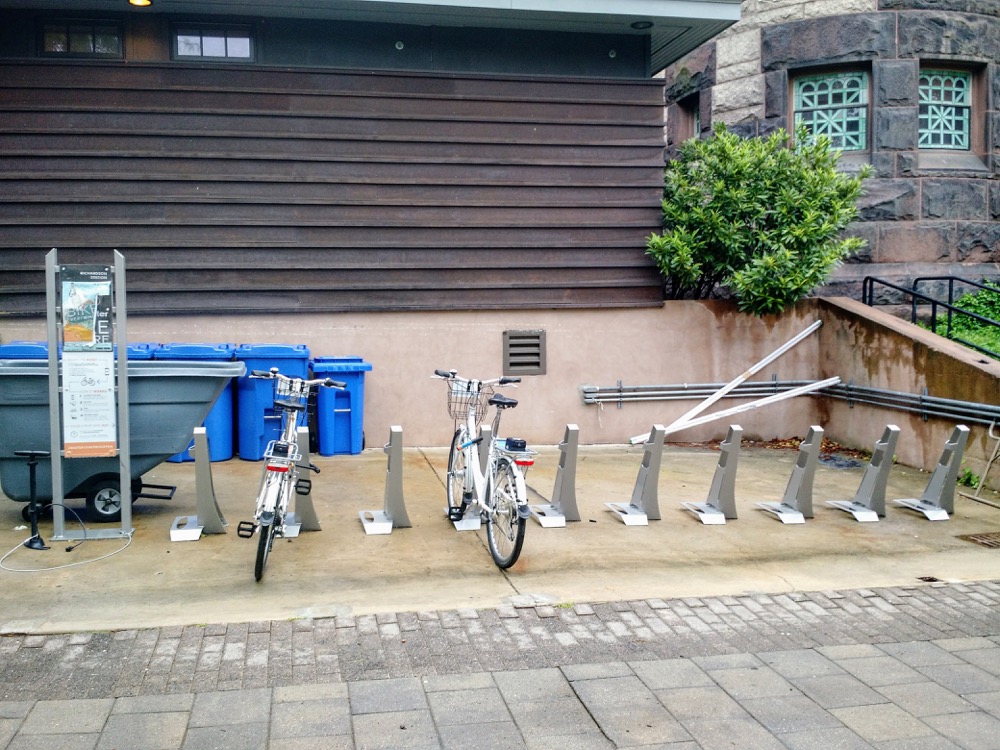
I see this station quite frequently on my way to the dining hall, and it’s been empty many times before. But today, there are 2 bikes here.
Princeton Station: 3 bikes (10:45 AM)
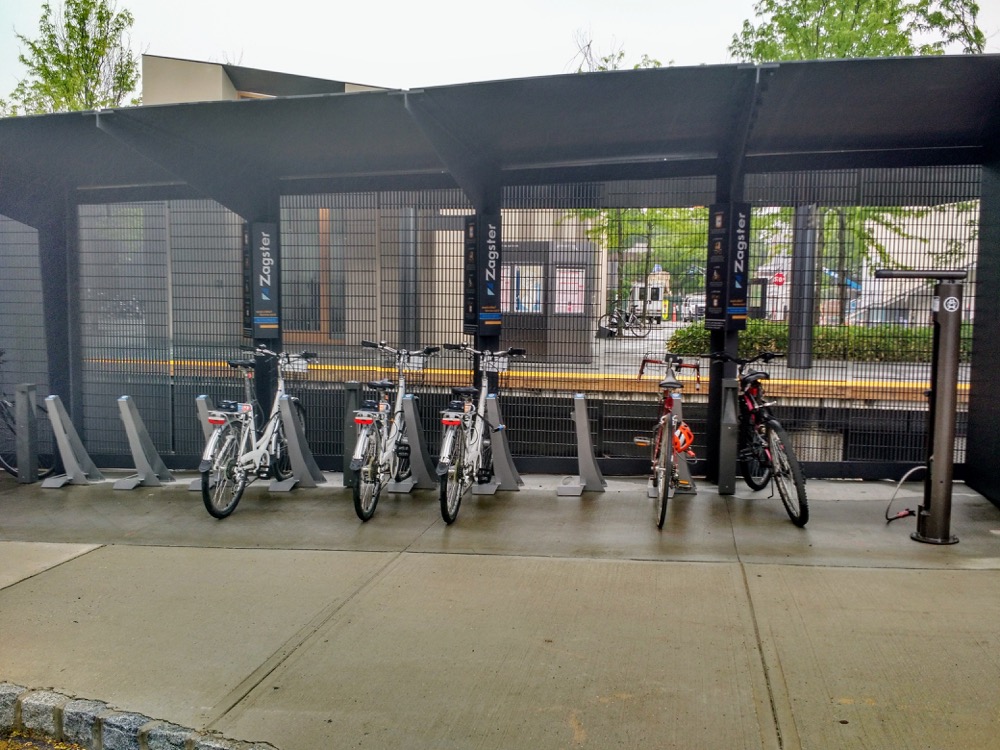
This is a trend that I see fairly frequently: locking a non-bike-share bike to the bike-share location. I see why this happens as some places around campus don’t have convenient locking posts, and even of those locations that do have bicycle posts, the bike-share ones are often of higher quality.
Forbes College: 2 bikes (10:50 AM)
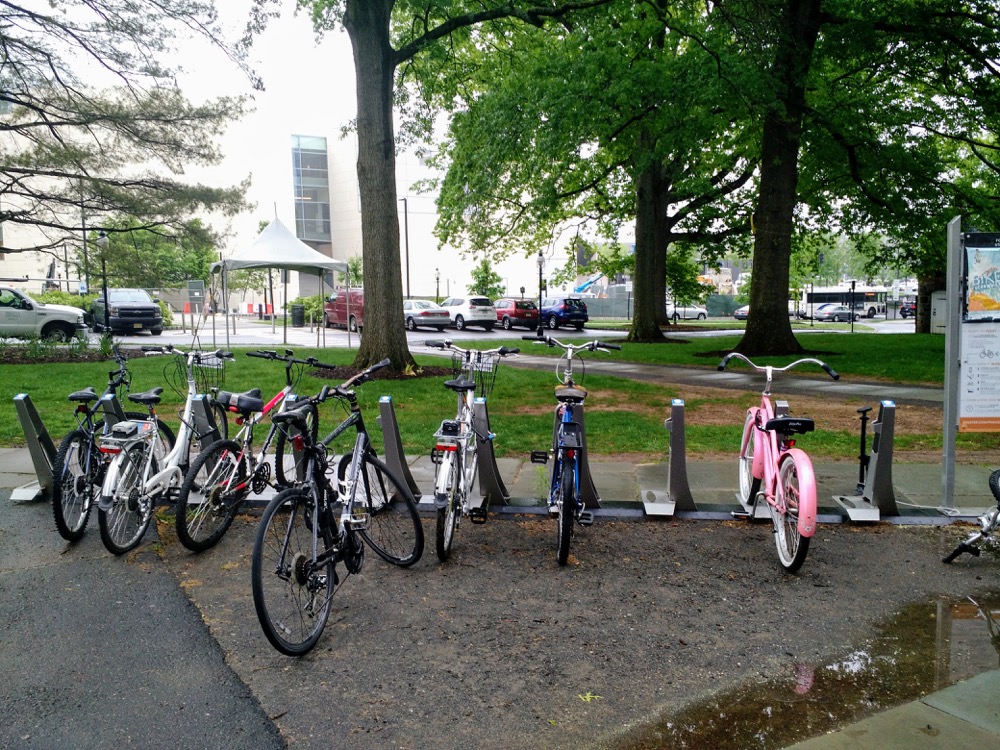
Lawrence Apartments: 9 bikes (11:00 AM)
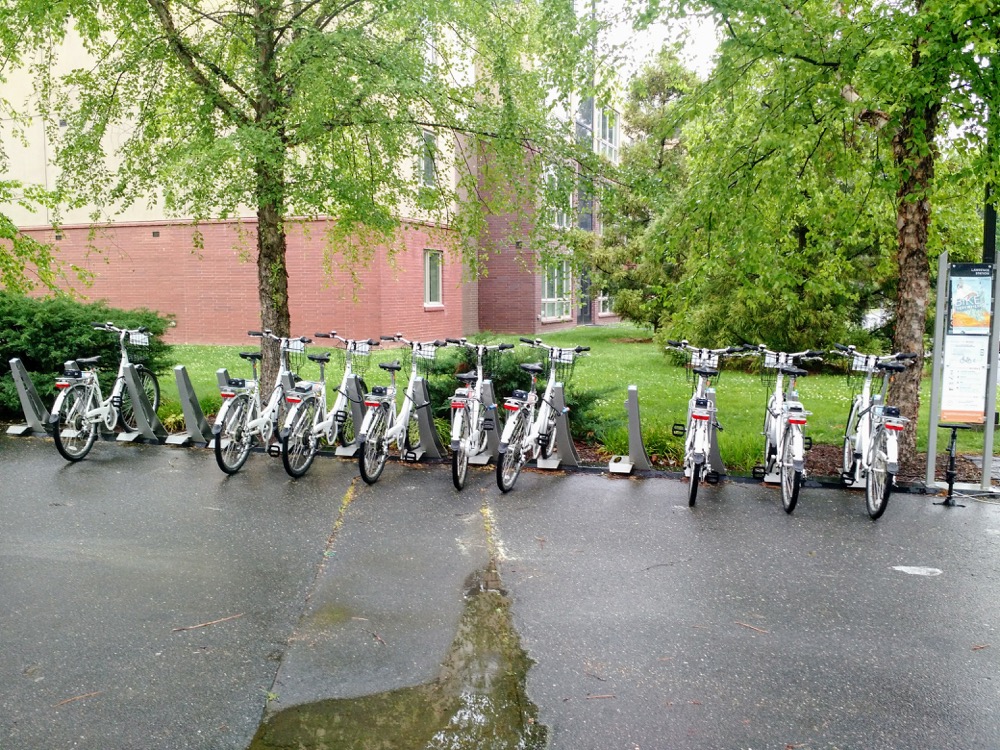
This was surprising. Lawrence apartments house graduate students and are slightly off the main campus, but they do have quite a few bikes. I’m surprised that at 11:00 AM in the morning there were this many bikes still at the apartments. I would have guessed people would ride them into central campus in the morning.
Lakeside Apartments: 9 bikes (11:15 AM)
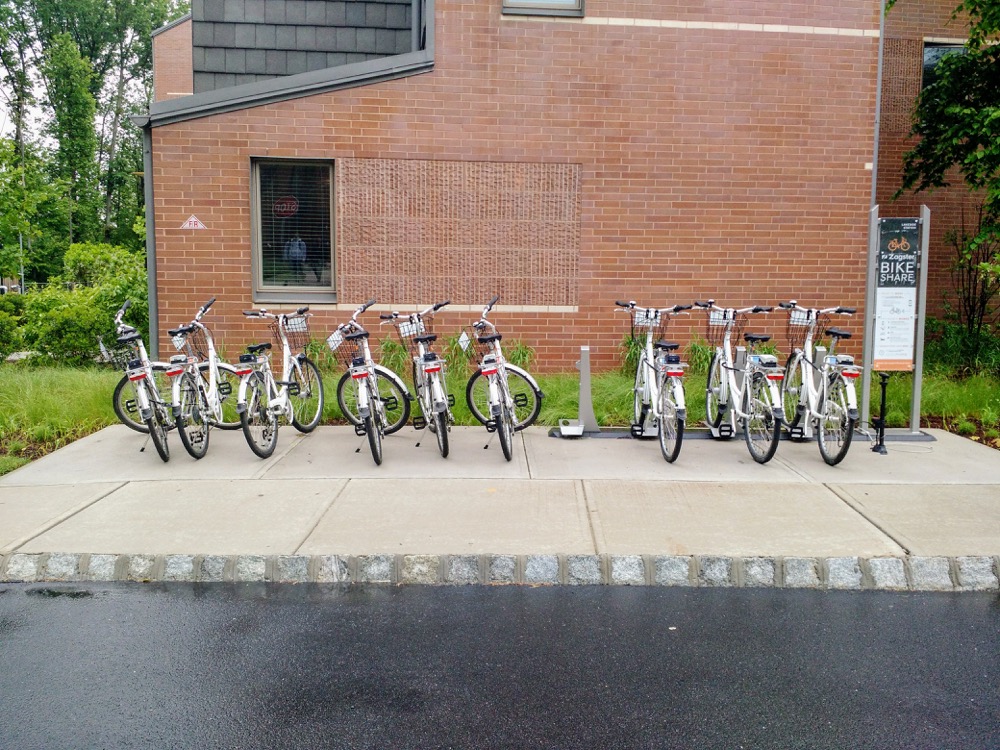
Also graduate student housing. Also has a lot of bikes.
Carl Icahn Laboratory: 4 bikes (11:15 AM)
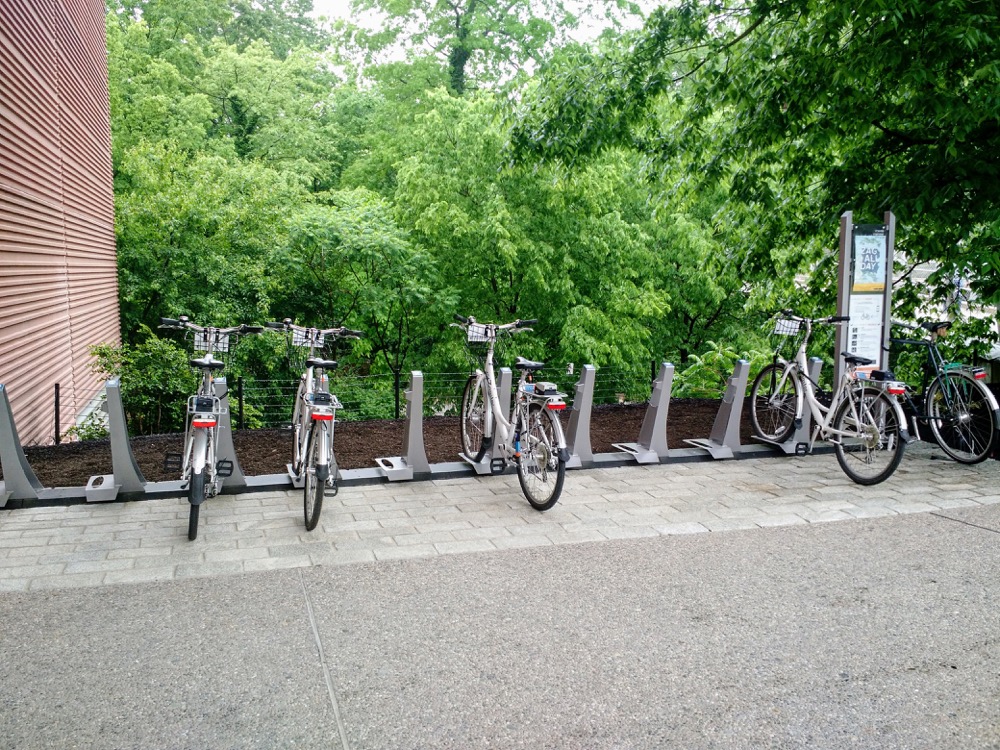
This is where the picture of the truck redistributing bikes is from.
Frist Campus Center: 1 bike (11:45 AM)
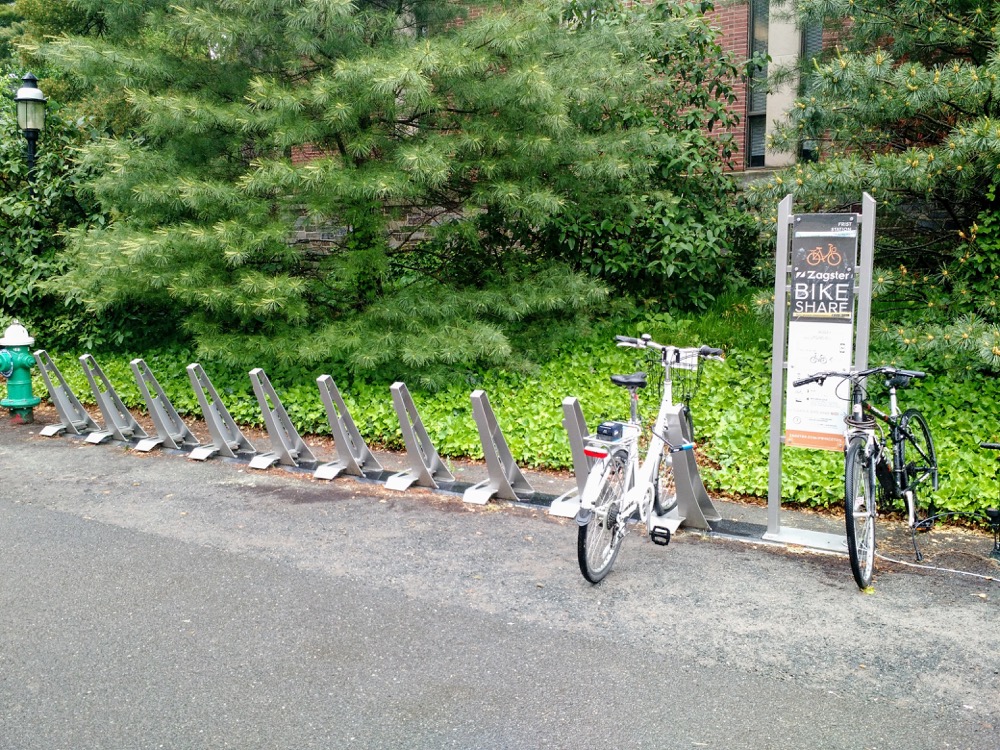
This station is frequently empty.
Computer Science Building: 4 bikes (11:55 AM)
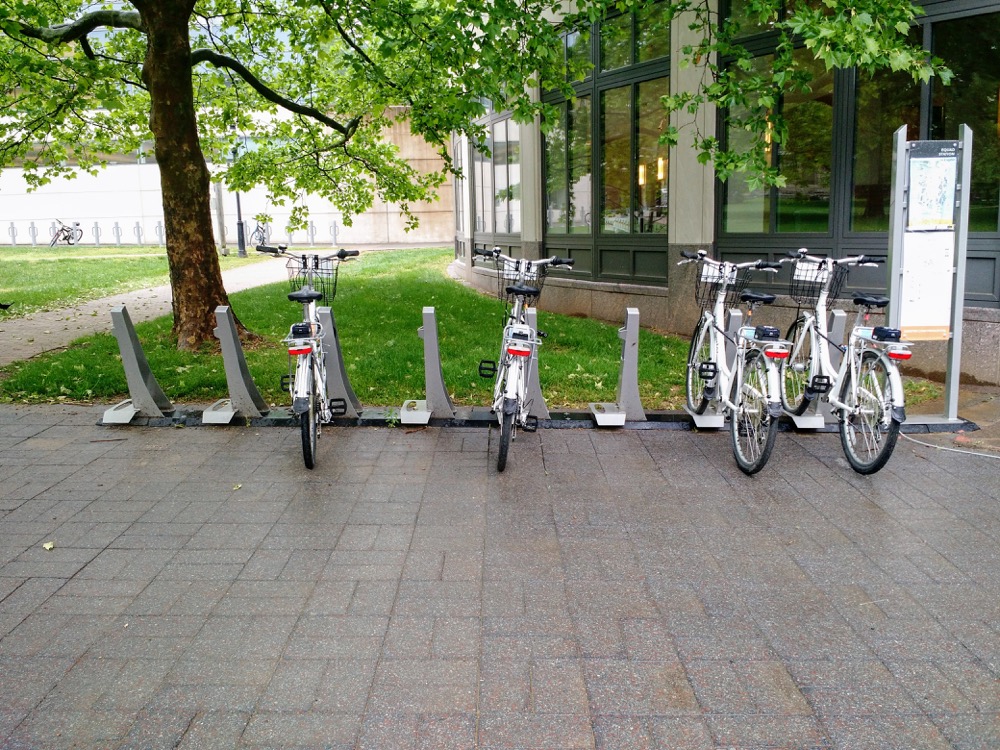
Firestone Library: 0 bikes (12:00 PM)
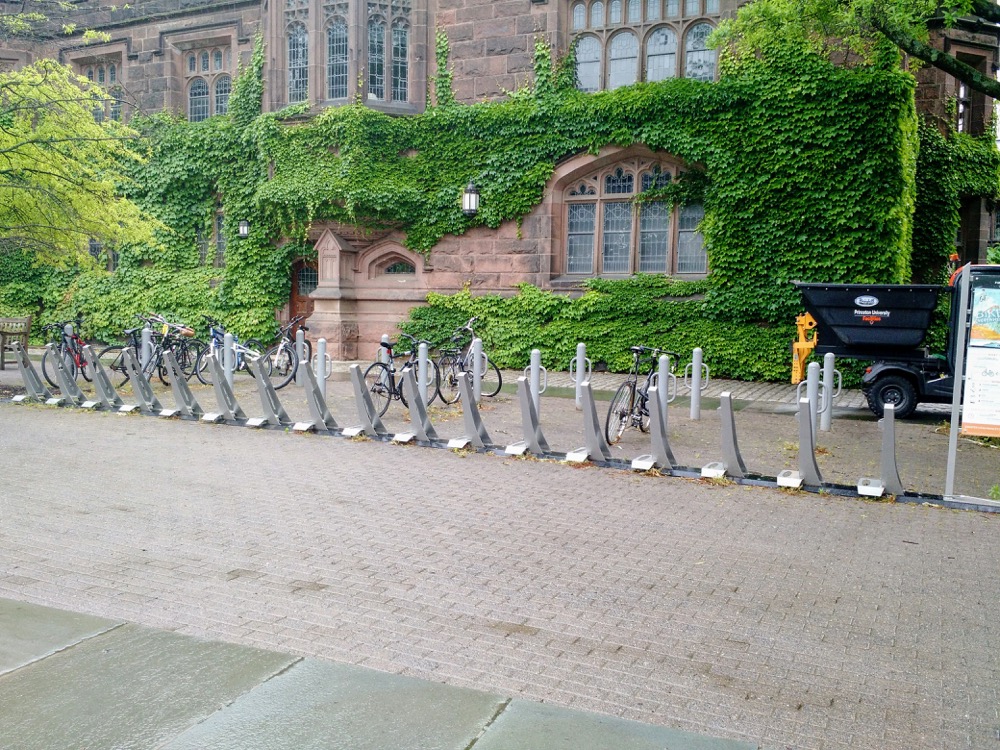
Of course, it was the last station I saw of the day that I saw that had zero bikes.